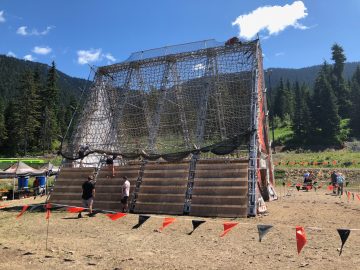Obstacle adventure courses (OACs) have their origins in the military and police force training. OACs have become a popular form of recreation for the general public, for reasons that remain unclear to me (insert laughter here).

Every OAC shares common elements including some or all of the following:
-a set of obstacles that require climbing, swimming, crawling, swinging, jumping, etc
-a physical distance that must be traversed between the obstacles
-additional hazards such as mud (lots of mud); water (cold water), electricity, darkness, barbed wire, etc
-challenges weather conditions
-difficult terrain to be navigated
Completion of an OAC requires certain mental toughness and these events are often attended by participants who run in teams and help each other to complete each obstacle, and ultimately, the entire course.
OACs are great community events with some risk attached. The waivers signed by event participants are a sight to behold. Risks to participants may come in the form of “natural hazards” such as the water obstacles (for those who don’t swim) or in the form of lacerations and rope burns that occur when navigating tight spaces, as well as shoulder injuries from being pulled up and over a given obstacle, and everything in between. Occasionally chronic diseases flare up during these events, leading athletes to present with shortness of breath (“I left my inhaler in the car”), hypoglycemia (I guess I didn’t eat enough before I started the race”), or cardiac arrhythmias (“Exercise sometimes triggers my SVT”).
All of the above make for interesting clinical shifts. And when you add in the wildlife factor, remote locations, and the possibility of extreme weather, things can get… interesting.
There is a tiny but growing body of literature about OACs that you might find interesting. As our ability to capture and analyze data in real time becomes more comprehensive, it is hoped that we will be able to clearly identify situations (and obstacles types) that are (to a greater of lesser degree) associated with injuries. This type of research has the potential to advance conversations about athlete safety in a positive direction. #makingadifference